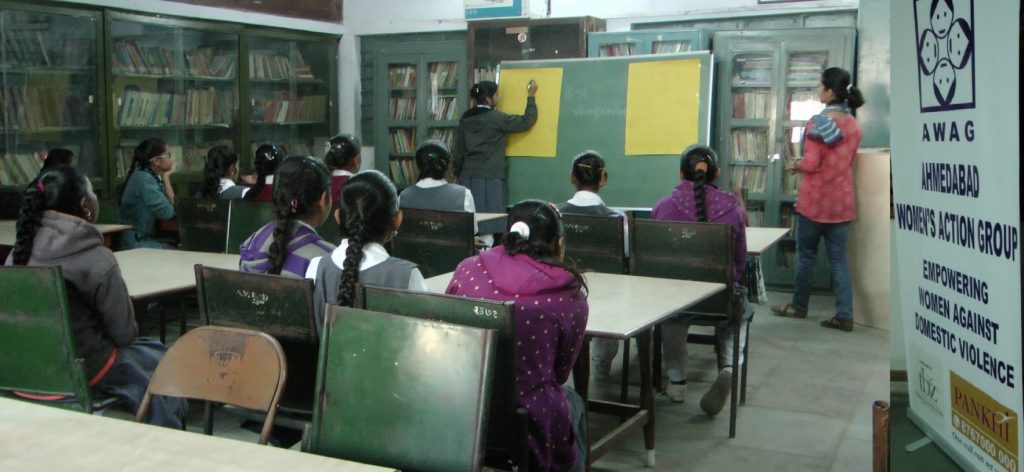Digital India – surely the country is progressing way too forward with all new technological advances, facilities and new laws. A new fad of adapting westernization is rapidly sweeping the country. But some things still don’t change forever- the never ending discussion on gender equality. The topic was in the limelight a decade ago and till date remains a subject of discussion not only amongst feminist groups but also among the common masses. So much has been written and talked about it that one could literally get gagged over it! Yet, the topic should be touched upon especially with the youths and adolescent groups, because surprisingly, nine out of ten youngsters cannot clearly tell the difference between sex and gender. For most of them it only comes down to physical differences and society made norms.
To kill this stereotype we have initiated sessions on ‘gender equality and awareness’ among school children. One such workshop that was undertaken with students of Standard 9 and 11 at Asarva Vidyalaya, Ahmedabad was very successful. The workshop focussed on gender sensitisation to make students aware about gender stereotypes and how gender roles are shifting in the current world. Students participated with the great enthusiasm in the group exercise, picture analysis to enlist the stereotypes and how numerous examples of role changing are making a mark in the growing society.
However continuous efforts on this track should bring sustainable results. It is important that gender equality be introduced to youth in the early years because it is not only a fundamental human right, but a necessary foundation for a peaceful, healthy and sustainable world.
| Over the last three years, there were over 24,000 reported dowry deaths in India. |
| As many as 70% of married women in India between 15 and 49 years of age are victims of beatings or rape. |
| According to a 2011 study, 72% of acid-attack cases in India from 2002 to 2010 included at least one female victim. |
| According to UNICEF, foetal sex determination by unethical medical professionals has today grown into a ₹1,000 crore industry in India. |
| Following the 2011 census, a number of activists raised concerns that up to 8 million female foetuses had been aborted in the previous decade. |
| Although child marriage is illegal in India, almost half of all women between the ages of 20 and 24 years were married off before the legal age of 18. |
| According to a report, India shows “extremely high” levels of gender inequality, with a Gender Parity Score of 0.48, compared to an ideal score of 1. |
| A recent survey revealed that the median wage for women in India was 27% lower than what men make. |
| According to the National Crime Record Bureau’s 2014 report, 39.8% of rape victims in India are girls under the age of 18. |
| While the male literacy rate of India stands at 82.14%, the female literacy rate is only 65.46%, with Rajasthan having the lowest female literacy at 52.66%. |
| And despite an improving child sex ratio, India still ranks an abysmal 127th out of 146 in the United Nation’s Gender Inequality Index. |
While the world has gained satisfactory progress towards gender equality and women’s empowerment under the Millennium Development Goals, the hard fact is that women and girls still continue facing discrimination and biasness in all walks of life.
Providing women and girls with equal access to education, health care, decent work and representation in political and economic decision-making processes will fuel sustainable economies and benefit societies and humanity at large.
Women and girls represent half of the world’s population and therefore also half of its potential. Today however, gender inequality persists everywhere and stagnates social progress. As of 2014, 143 countries have guaranteed equality between men and women in their Constitutions but 52 have yet to take this step. What happens if gender equality is not ensured? Inequalities faced by girls can begin right at birth and follow them all their lives. In countries, especially like India, girls are deprived of access to health care or proper nutrition, leading to a higher mortality rate. As girls move into adolescence, gender disparities widen. Child marriage affects girls far more than boys and so other social stigmas.
Organisations such as AWAG, are taking small steps to bridge this gap and educate masses about gender equality. Through seminars, talks and discussions and sessions at school we stress on facts as to why gender equality is important, what happens if gender equality is not ensured, how does gender equality affect women and most importantly why should gender equality matter to each one of us?

